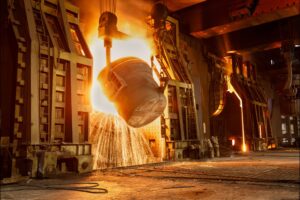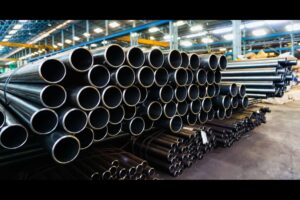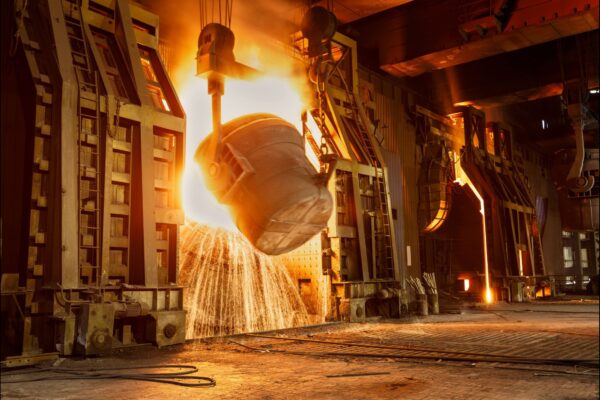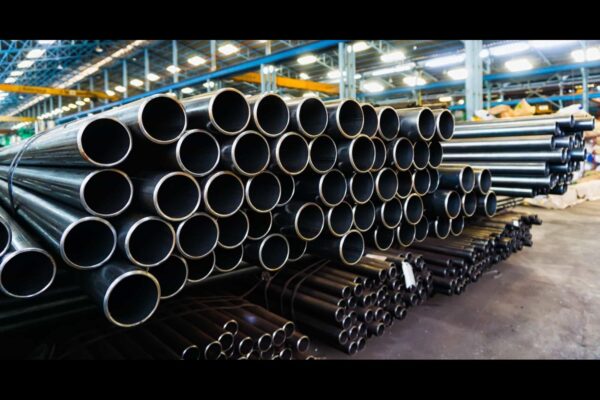Revolutionising pricing and predictability in the aluminium and steel raw material marketplace
by Prahlad Krishnamurthi, Chief Executive Officer, BizongoBuy
Did you know that the Indian B2B e-commerce market is set to grow at a remarkable 25.43% CAGR between 2022 and 2028, reaching an estimated value of $11,903.66 million by 2028? This surge is driven by businesses across various industries looking for more efficient, cost-effective ways to procure raw materials. In today’s fast-paced business environment, where pricing volatility and supply chain disruptions can make or break profitability, companies are increasingly turning to B2B e-commerce marketplaces to streamline their procurement processes. These digital platforms are revolutionizing sectors like aluminium and steel, offering benefits that range from improved pricing transparency to enhanced procurement predictability.
Benefits of a B2B e-commerce marketplace
B2B e-commerce platforms bring a host of advantages to companies in the raw materials sector. These online marketplaces centralize the buying and selling of materials, making it easier for buyers and suppliers to connect, negotiate, and complete transactions. One of the standout features of the platform is the enhanced pricing transparency they provide. With real-time price updates and competitive bidding options, buyers are no longer left in the dark about fluctuating market rates. This leads to more informed purchasing decisions, enabling businesses to secure better deals on raw materials.
Another key benefit is predictability. In traditional procurement processes, pricing can vary significantly due to factors like supply chain disruptions, global commodity price fluctuations, and negotiation inconsistencies. B2B e-commerce platforms reduce these uncertainties by providing standardised pricing models, making it easier for buyers to plan and budget. This ensures a more predictable cost structure, which is essential for companies dealing with large volumes of materials, such as aluminium and steel.
Moreover, these platforms streamline inventory management by offering real-time tracking of the raw material which helps to improve the predicability of the entire procurement process. It helps provide businesses with live status of their orders and estimated delivery time, helping to reduce the uncertainties and streamline operations. Additionally, businesses benefit from a broader supplier base, allowing them to find the best sources for raw materials, ensuring higher quality and better service at competitive prices.
Challenges in traditional procurement
Traditional procurement often involves a mix of manual tasks, such as phone calls, emails, and paper-based documentation, making the process time-consuming and prone to errors. This inefficiency becomes even more apparent when handling bulk purchases of raw materials like aluminium and steel, where the stakes are high, and price fluctuations are common.
One of the primary challenges is inaccurate data. In traditional procurement, the manual entry of data across multiple systems increases the risk of mistakes, which can lead to delays and costly errors. For instance, incorrect pricing or inventory levels may cause discrepancies in order quantities, affecting production timelines and customer satisfaction.
Another major issue is lack of transparency. Without a centralized platform for tracking procurement activities, businesses may struggle to gain visibility into the entire process. In sectors like raw materials, where prices can vary significantly depending on external factors, this lack of transparency can lead to unexpected costs and inefficiencies. Additionally, traditional procurement processes often involve multiple departments, leading to confusion about who is responsible for which tasks, resulting in delayed approvals or missed deadlines.
Supplier selection is another hurdle. Selecting the right supplier for raw materials involves lengthy negotiations, often without clear visibility into the supplier’s reliability, quality, and pricing consistency. This can result in overpaying for subpar materials or dealing with suppliers who fail to meet delivery deadlines.
Revolutionising raw material procurement
To address the inefficiencies of traditional procurement, many companies are turning to digital platforms that streamline the process of sourcing raw materials. These platforms offer a centralized marketplace where buyers can access real-time prices from multiple suppliers, enhancing pricing transparency and predictability. In addition to this users can stay informed about the recent developments and trends through timely notifications and with access to mobile platforms making it smooth for businesses to receive updates, monitor prices and make decisions on the go.
Additionally, these platforms facilitate seamless communication between buyers and suppliers, eliminating the fragmented nature of traditional procurement methods. By aggregating orders from multiple buyers, they enable suppliers to offer better prices through economies of scale, creating a more competitive environment. Overall, digital solutions are transforming raw material procurement by driving efficiency, reducing errors, and empowering businesses to make more informed decisions, which is particularly crucial in industries like aluminium and steel where market volatility can significantly impact profitability.
Conclusion
The procurement landscape for raw materials, particularly aluminium and steel, is undergoing a transformation due to the rise of B2B e-commerce arenas. These platforms are revolutionizing how businesses approach pricing, supplier selection, and overall procurement efficiency. By offering real-time price comparisons, enhancing transparency, and improving predictability, digital solutions are eliminating the inefficiencies of traditional systems and paving the way for smarter, more cost-effective decision-making. As more businesses adopt these platforms, we can expect a future that is faster, accurate, and more aligned with the evolving needs of the marketplace.

.jpg)














